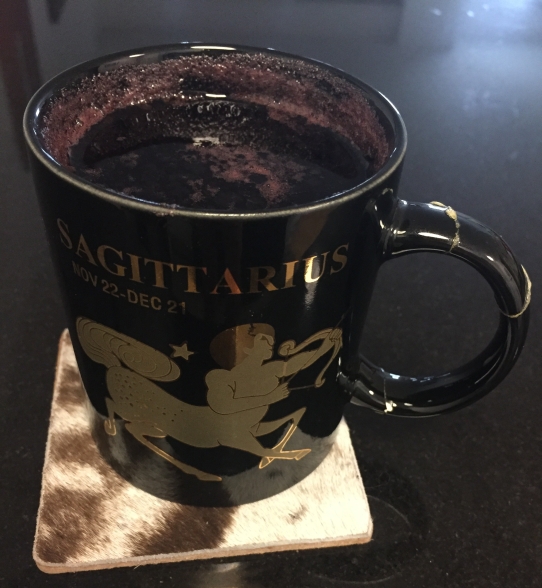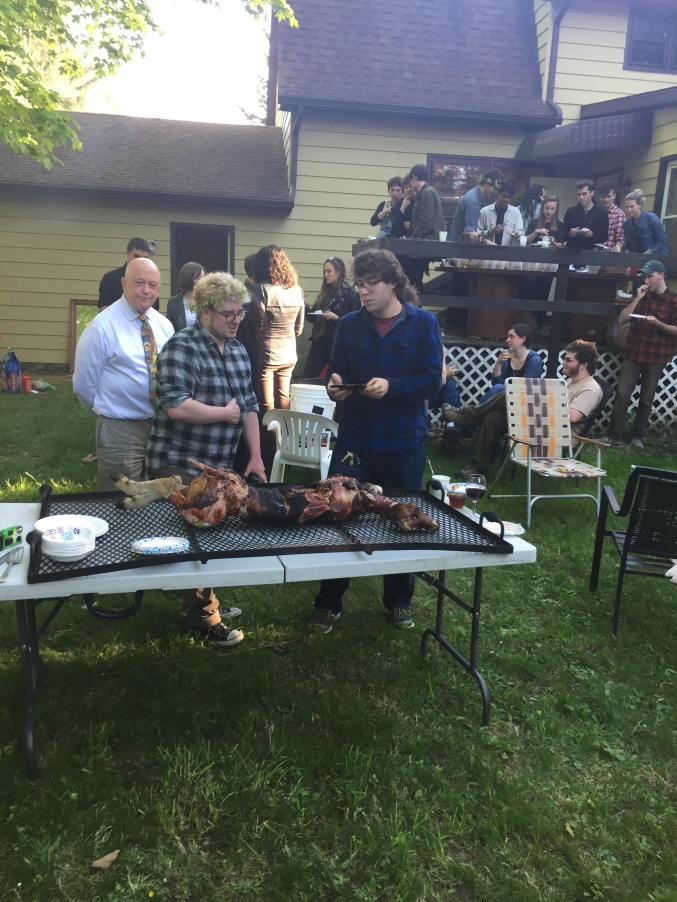“Saturnalia, the very best of days!”
~ Gaius Valerius Catullus, Catullus 14, 1st century BCE
From the 17th to the 23rd of December, Romans greeted each other with a hearty “Io Saturnalia!” (pronounced yo). It was the most important Roman holiday, a time of feasting and fun when the normal order of things was upended and social divides temporarily erased. During Saturnalia, people dressed in clashing colors that would have been laughed at any other time of year. Gambling, usually outlawed, was practiced openly, as revelers bet on games of dice and trivia and went bobbing for corks in tubs of water. Masters waited on their slaves, and everyone wore the felt cap that usually distinguished freedmen (former slaves) from born citizens. Friends and family exchanged gifts, including toys for children, gag gifts between close friends (the famed poet Catullus once received a book of “the worst poems of all time”), and sigillariae, wooden or clay luck charms in the form of tiny faces. Saturnalia is sometimes called the Ancient Roman Christmas, although Christmas itself was first-celebrated in 4th-century Rome. Saturnalia continued to exist as a secular holiday alongside Christmas for at least another century, until the new religion gradually eclipsed the older and adopted some of its traditions, just as Saturnalia had adopted elements of earlier Greek and Roman festivals.
Although it evolved over time, Saturnalia remained at its core a celebration of the harvest. Saturn, the festival’s namesake, was a deity associated so strongly with agriculture that the hollow ivory statue in his temple in Rome was filled with olive oil. Saturn was said to have ruled on earth in the distant past during a “Golden Age,” when food came freely from the land without labor and everyone lived in peace. The abundance and license of Saturnalia was meant to imitate the utopian conditions of the kingdom of Saturn.
THE SATURNALIA FEAST
We don’t know of specific dishes unique to Saturnalia, but we do know that eating was an important part of the festival, rooted as it was in the agricultural calendar. In general, ancient people followed seasonal eating patterns out of necessity. Based on our knowledge of the festival and the Roman winter diet, we can guess what the menu of a Saturnalia feast may have looked like:
- Wheat bread was served at every meal, for Romans of every social status. The Roman government often distributed free bread to the people on holidays like Saturnalia. Most Romans did not have an oven at home, and would either buy fresh bread from bakeries or bake homemade dough in communal ovens. For religious holidays and festivals, Roman bakers shaped their wares into a variety of forms: animals, people, gods, even human genitalia (for good luck).
- Pork was the favorite Roman meat, and in the words of the poet Martial, “a pig will make you a good Saturnalia.” Live pigs and pork sausage were given as gifts during Saturnalia, and pigs were the traditional sacrifice offered to Saturn and other “chthonic” deities (gods of the earth and Underworld). Sacrifice in Roman times was a bit of a racket. The buyer of a sacrificial animal would share the meat with the temple priests who performed the sacrifice, and priests would examine the animal’s entrails for omens, a practice called extispicy (yes, that’s a real English word). If the extispicy showed ill fortune, a new sacrifice would have to be provided; at the buyer’s expense, of course.
A Roman heading home from the Temple of Saturn with their share of fresh pork would have had many options for preparing it. They might stew it with apricots, roast it with figs on a bed of barley, or boil it in milk. - Winter vegetables like leeks, turnips, onions and beets, as well as pickles, formed an important part of the Roman diet, especially for the many who could not afford a sacrificial pig. Parsnips and carrots were fried in oil and drizzled in a savory, salty wine sauce (check out my recreation of this recipe here).

A still-life of fruit from the home of a Pompeiian woman named Julia Felix.
- The final course of the meal, dubbed secunda mensa (second plate), consisted of honeyed desserts and seasonal fruit. Desserts might include savillum, a cheesecake topped with poppy seeds, or crunchy candy made from honey and nuts. Affluent Romans enjoyed fried dough drizzled with honey and dusted with imported black pepper. As for fruit, apples were a Roman favorite, served at the end of meals so frequently that the expression ab ovo usque ad mala, “from eggs to apples,” was used to mean “from start to finish” (compare English “soup to nuts”). Pears were also very popular; the natural historian Pliny described 40 different cultivars in the 2nd century CE. Just like people today, Romans sometimes cooked their fruit. Apicius gives a recipe for a baked pudding (patina) of mashed pears with cumin, honey and a sweet raisin wine called passum.
- Nothing is better on a cold December day than hot mulled wine, and the Romans boiled leftover wine with honey, dates and spices to make a beverage similar to the modern one. Wine in general was an important part of the Saturnalia atmosphere; unless you happened to be Pliny, who describes himself retreating Scrooge-like to his private rooms “during the Saturnalia, when the rest of the house is noisy with the license of the holiday and festive cries. This way I don’t hamper the games of my people and they don’t hinder my work or studies.”
Roman holidays like Saturnalia served an important social function. Relaxing social boundaries released social tension, enabling the Romans themselves to relax; sharing food reminded them to be thankful to the gods, and conjured up a vision of Saturn’s lost paradise that would sustain them through the hardships of winter. So don’t be a Pliny this holiday season. Remember the Romans, and how they made December merry. Io!

This mulled wine is made using Roman ingredients: honey, grains of paradise (known to the Romans as “African pepper”), long pepper, and mastic (a kind of pine resin). Being a Sagittarius myself, I thought it would be fitting to drink it out of my battered-but-still-serviceable Sagittarius mug, and place it on a coaster made out of zebra hide.






You must be logged in to post a comment.